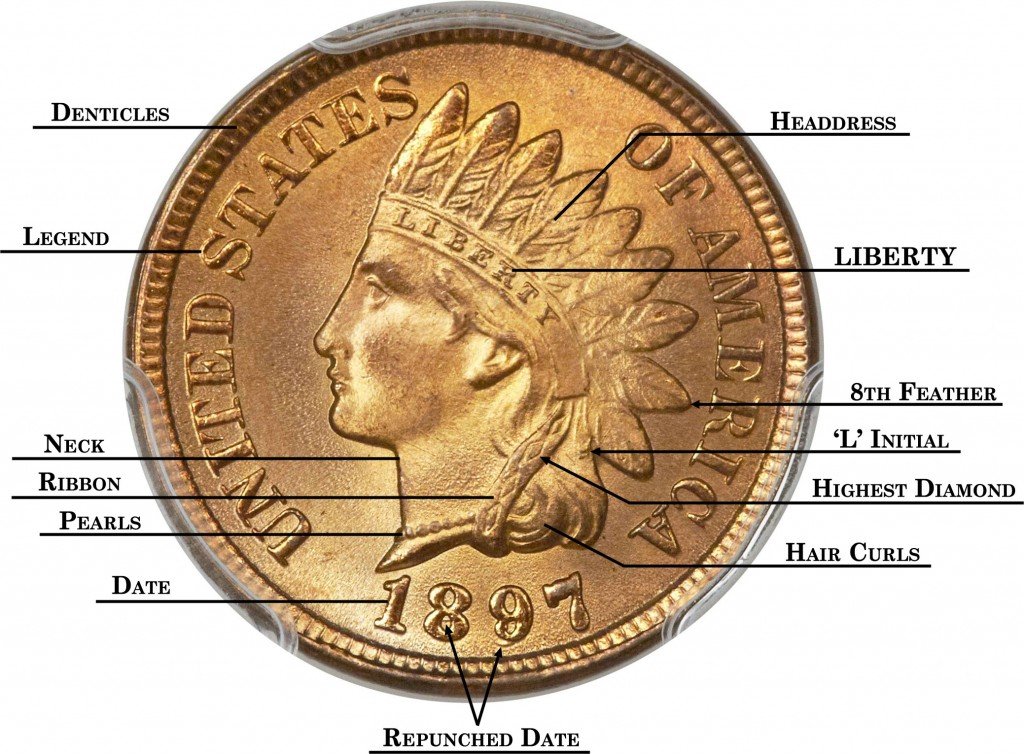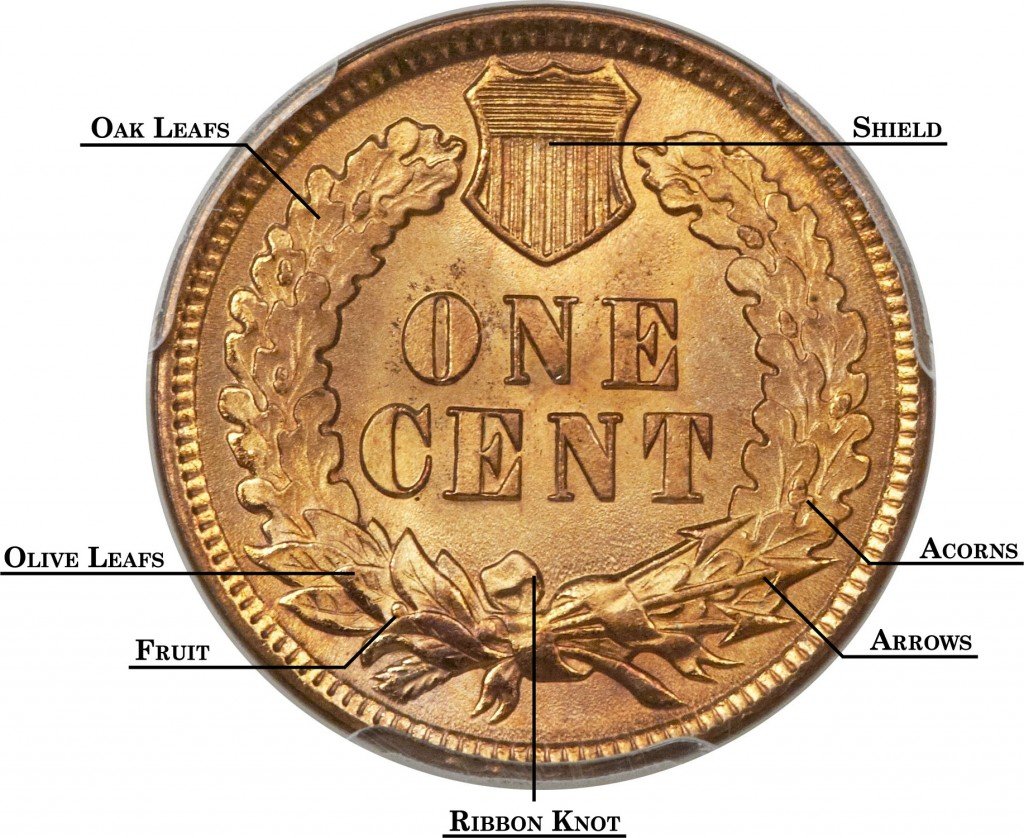Indian Head Penny Design
The Indian Head Penny was the work of the Chief Engraver JP Longacre. Knowing the Indian Head Penny design will make it much easier to identify die varieties. Certain areas of the design are more likely to exhibit a variety. For instance, look around the date for a repunched date (RPD). Or on the reverse, look at the veins in the leafs to identify a doubled die (DD). Misplaced dates, or MPDs, are often found in the denticles below the date. Particularly desirable misplaced dates are found inside the bust or protruding from Liberty’s bust into the field, like the 1897 MPD-001.
Most CUDs and cracks (CRKs) occur on the reverse die. In the operating press, the reverse die was the anvil and the obverse die was the hammer. The reverse die was resting in the press, face up, so when the die failed it tended to stay in the press. Conversely, when the obverse die failed gravity would cause the die to become unseated in the press and required removal. Often collectors don’t look at the back of the coin, so the reverse might have some hidden surprises for the hunter!
Changes in the obverse and reverse hub designs of Indian Head Pennies occurred between 1859 – 1909. Most often, design changes are done to help balance the obverse and reverse designs properly such that the design on each side strikes up fully when minted. If you compare the obverse and reverse designs, you will notice that most of the fields on the obverse occur around the rim. On the reverse, the opposite is true. The main design elements on the reverse are around the rim, and the fields are primarily in the center of the coin. This arrangement helps ensure that Liberty’s portrait strikes-up fully.
Indian Head Penny Design – Obverse

Indian Head Penny Design – Reverse
Photos courtesy of Heritage Auctions.
